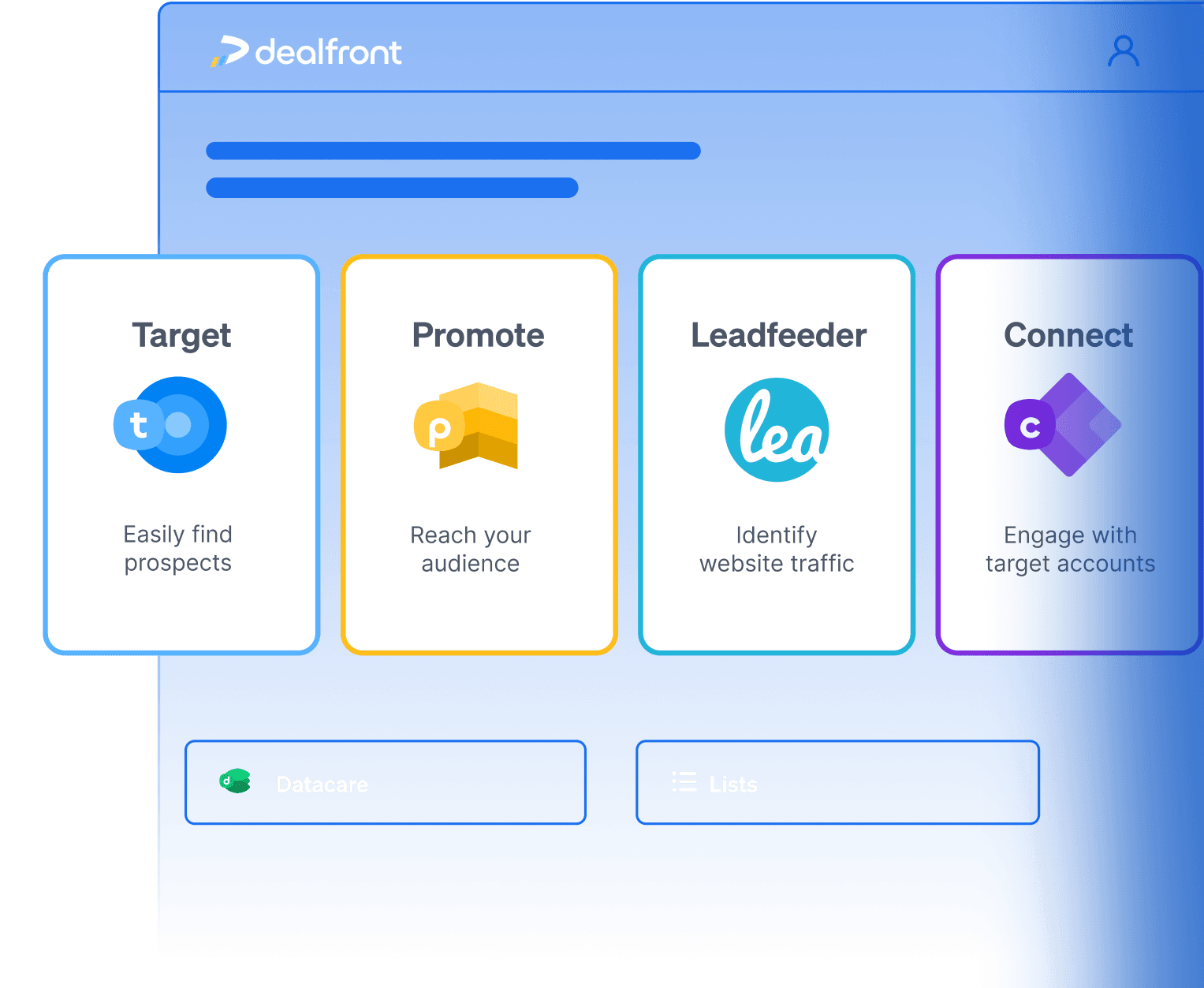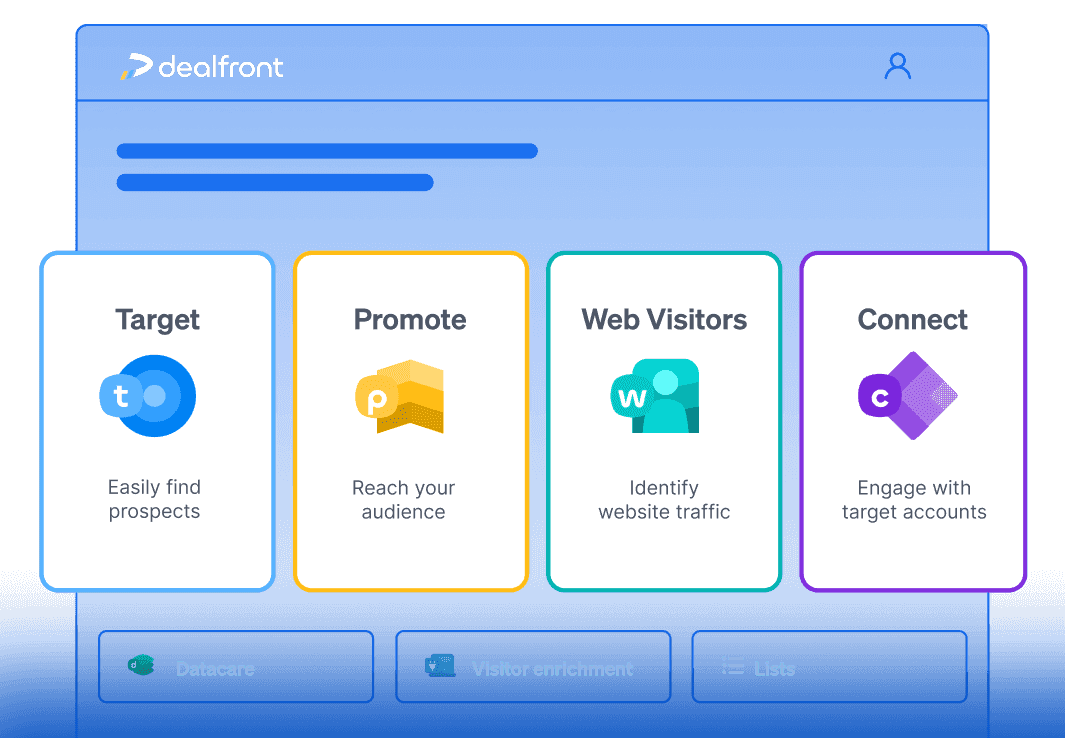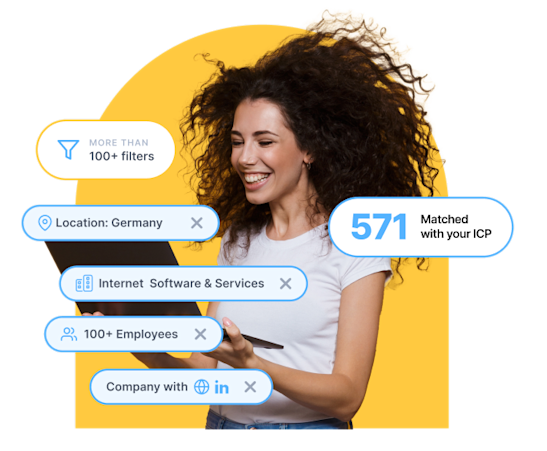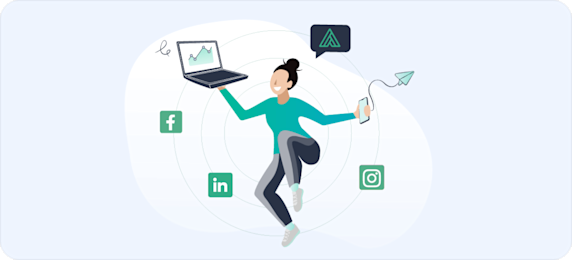How to Validate Your Paid Media Spend
Expected results
Gain real-time visibility into paid campaign performance
Prove which ads drive ICP engagement, not just clicks
Align sales and marketing around shared signals and activity
Eliminate wasted spend on low-quality, non-converting traffic
Close the loop between paid media and actual revenue

You're investing in Google Ads, LinkedIn campaigns, and paid partnerships, but can you prove they’re delivering real business impact?
In B2B marketing, attribution isn’t straightforward. Long sales cycles, buying committees, and offline conversations mean that clicks and form fills only show a fraction of the full picture. That’s why understanding B2B intent data is essential; it uncovers buying signals beyond the click. What matters isn’t just who filled out a form, but who’s showing intent, who’s talking to sales, and who’s likely to buy. This Play gives you a clear, tactical, and repeatable method to validate your paid media spend using Dealfront. Created in collaboration with Markus Reutner from purple path, a trusted Dealfront partner, it’s based on a real-world implementation that helped align marketing efforts with sales results.
Inside, we’ll show you how to:
Track which companies are engaging with your campaigns, beyond just who clicks.
Push campaign data directly into your CRM, so you don’t lose context or time.
Enable sales teams with timely signals, turning anonymous traffic into warm outreach.
Report on what’s actually driving pipeline and revenue, so you can double down on what works.
Whether you're trying to justify spend, refine strategy, or align better with sales, this playbook will help you fully understand, track, and ultimately better justify your paid media efforts.
Why paid campaign attribution is broken
Clicks and impressions don’t equal ROI
Digital ad platforms are designed for B2C. Their default metrics (click-through rates, impressions, and conversions) don’t reflect the complexity of the B2B buying journey. In B2B:
Sales cycles are long (90+ days is standard for SaaS)
Buying decisions involve multiple stakeholders across departments
Conversions often happen offline, through calls, meetings, or email threads
Decisions rarely happen in a single session, or even a single quarter
In this environment, traditional tracking methods fall short. A bounce from a paid landing page might seem like a dead end but it could be the first touch from a key decision-maker. And because most platforms focus on individual behavior, not account-level activity, the bigger picture is lost. Engagement from your ideal customer profile (ICP) can slip by unnoticed, simply because no one filled out a form.
CRMs only see form fills
Your CRM might capture a handful of leads from a Google Ads campaign, but what about the anonymous CMO who browsed your demo page after seeing a Display ad? Or the five-person buying committee that quietly researched your solution over several visits but never filled out a form?
Without visibility into this broader account activity, you can’t:
Prove the true impact of top-of-funnel campaigns
Equip sales with timely buying signals
Accurately attribute pipeline and revenue to your paid efforts
Relying on form fills alone is like measuring a conversation by who shook your hand, not who stayed to talk. To get attribution right in B2B, you need to track the whole journey: which companies visited, what brought them there, and how they engaged. That’s the level of insight that turns marketing data into sales intelligence.
What B2B marketers actually need to see
Before we dive into how Dealfront helps, let’s take a quick step back, because before you can fix attribution, you need to define what useful insight actually looks like for B2B teams.
The truth is, you don’t need more data, you just need smarter signals. Data that cuts through the noise, connects the dots, and reflects how buying decisions really happen in B2B.
What matters in B2B attribution:
Which companies are engaging with your brand, not just which individuals.
Where they came from, including the specific campaign, keyword, or traffic source that brought them to your site.
Whether they’re ICP-fit, based on factors like company size, industry, or geographic location.
What content they consume, not just what they clicked first, but what they explored before and after.
Whether they return and how their engagement evolves across time and touchpoints - you can track this insight using web visitor intent data, as outlined in our post on elevating outreach with visitor intent.
And beyond tracking these behaviors, you need to:
Monitor account activity over weeks or months, not just within a 90-day lookback window.
Recognize multiple stakeholders from the same company engaging in parallel, often across departments and roles.
Attribute offline conversions, like sales calls, booked meetings, and deals opened in your CRM.
Sync insights with sales, so your team can act on buying signals while they’re still fresh.
Most paid media platforms and analytics tools simply aren’t built for this kind of complexity. They track clicks, not context, users, not accounts, and linear journeys, not the messy, multi-threaded reality of B2B buying.
“The B2B buyer journey is complex, not linear. Yet, too many paid media strategies are still built on outdated models obsessed with lead volume. We need to stop measuring marketing channel-by-channel and instead focus on how companies actually engage, from first touch to closed-won. This isn't just about better attribution; it's about empowering marketers to truly validate their spend and drive the kind of quality pipeline that sales actually wants.”
That’s where Dealfront comes in. It fills the attribution gap, connecting campaign activity with real business outcomes.
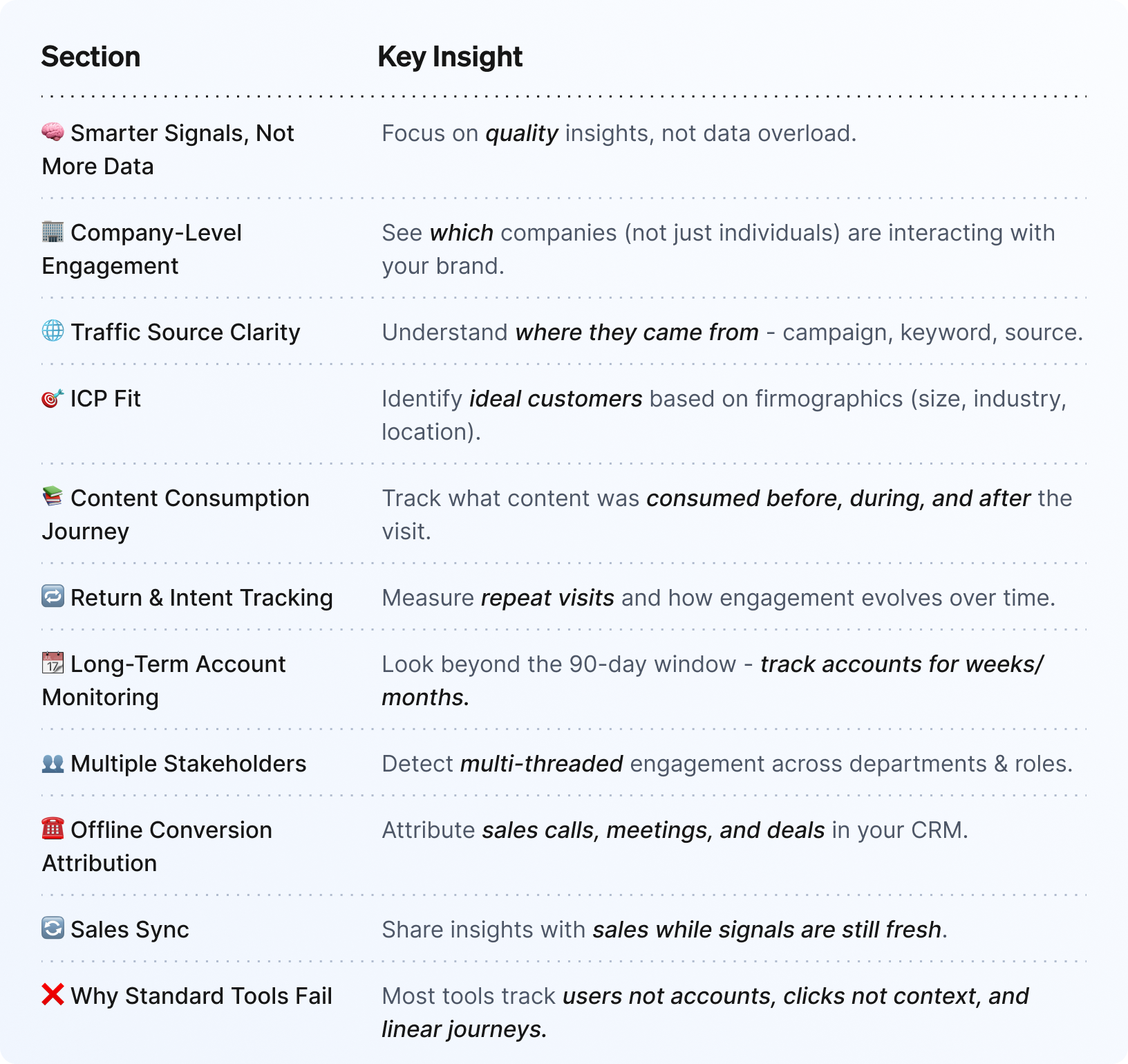
How Dealfront helps track and validate your paid media spend
With the right setup, Dealfront gives you the power to go beyond surface-level metrics and understand what’s really happening behind the clicks. By combining the Leadfeeder module, CRM integration, and a little UTM discipline (learn more in our CRM integration playbook), you can:
Identify companies engaging with your brand through paid campaigns
Filter visits by campaign, keyword, medium, landing page, and see what’s working
Push high-value accounts directly into your CRM, enriched with intent data
Tag company visits to trigger timely follow-ups from your sales team
Report on ROI based on real company engagement, not just lead gen forms
Why this matters: Traditional attribution tools give you session-level data. That’s fine for quick, transactional journeys. But in B2B, you need account-level visibility so you can track how multiple stakeholders from the same company engage with your paid media over time.
That’s where Dealfront makes the difference. It connects anonymous website traffic with real company names, making it possible to see intent in context, not isolation.
So whether you’re running search, display, social, or affiliate campaigns, Dealfront helps you:
Spot companies who click but don’t convert, and still show strong buying signals
Track revisit patterns and interest spikes, so you know when engagement is heating up
Give sales actionable context, not just contact info, but timing and topics of interest
Focus your budget on what moves pipeline, not just what drives impressions
Let’s break it down.
Step 1 – Get your UTMs in order
Before you can measure or optimize anything, you need a reliable foundation, and that starts with your UTM structure. UTMs (Urchin Tracking Modules) provide the critical metadata Dealfront uses to categorize, filter, and report on your paid media traffic. Without them, segmentation is impossible, and attribution falls apart. Use UTM parameters to track your ads effectively.
Why this matters: A disorganized or inconsistent UTM strategy is one of the most common (and costly) mistakes in paid media attribution. When campaign names don’t follow a consistent format, Dealfront can’t group visits correctly across sources, channels, or assets. This leads to skewed data, broken feeds, and murky ROI.
What to do:
Establish and enforce a clear, consistent naming convention for your UTMs:
utm_campaign should reflect the campaign objective or audience. e.g. utm_campaign=retargeting_demo_offer
utm_medium should describe the ad channel (e.g. cpc, display, linkedin)
utm_source can specify platform (e.g. google, linkedin, partner)
utm_content to differentiate creative variations
utm_term to track keywords in search campaigns
Apply these UTMs to every outbound link in your paid media ecosystem, including:
Google Ads (Search, Display, YouTube)
LinkedIn Ads
Programmatic platforms
Affiliate and sponsorship campaigns
Avoid these common pitfalls:
Campaign names in different formats (Retargeting_demo, retargeting-demo, Retarget_Demo)
Missing UTMs in ad copy or email footers
Using vague names like summer-campaign-v1
Pro tip: Create a shared UTM guide in your team workspace and enforce consistency via templates, training, or URL builders.

Step 2 – Create Custom Feeds in Dealfront
Once your UTMs are live and your paid campaigns are running, it’s time to make your traffic visible and trackable in Dealfront using Custom Feeds within the Leadfeeder module.
a. Campaign-based feeds
Use the “Acquisition → Campaign” filter to group visits by specific campaign names. This gives you a clean view of how individual campaigns are performing which is ideal for A/B testing audiences, offers, or creative.
Examples:
Filter: Acquisition → Campaign contains "product-launch"
Filter: Acquisition → Campaign is "linkedin-cmo-abm"
Why it matters: You can monitor performance at the campaign level, compare different audience segments, and see which campaigns attract ICP-fit companies. Over time, this lets you correlate visits with opportunities or revenue in your CRM.
b. Medium-based feeds
Segment your traffic by medium to understand how each channel is contributing to engagement and awareness.
Examples:
Filter: Acquisition → Medium is "cpc" → isolates search campaigns
Filter: Acquisition → Medium is "display" → shows banner ad visits
Filter: Acquisition → Medium is "linkedin" → captures social ad traffic
Why it matters: This gives you a high-level view of channel performance. For instance, you might discover that display ads are great for top-of-funnel awareness, while LinkedIn performs better for ABM campaigns targeting senior buyers.
c. Keyword-based feeds
For search campaigns, filter by keyword to understand which terms are driving traffic, and which types of companies are responding.
Example:
Filter: Acquisition → Keyword is "b2b demo software"
Why it matters: This gives you clarity on search intent. You can refine your keyword strategy, eliminate underperforming queries, and double down on phrases that bring in high-intent, ICP-fit companies.
Pro tips:
Use hierarchical naming in your campaigns for easier segmentation (e.g. Google Ads – Non-Brand – Europe)
Group campaigns by objective (Brand awareness, Retargeting, Product-led, etc.)
Review feed performance weekly to optimize targeting, creative, or spend
Step 3 – Set up automations and tagging
Once your feeds are in place, automate what you can. Dealfront’s automation and tagging features save time, reduce human error, and ensure consistent data flows into your CRM and sales notifications.
What to do:
Set automation rules in each feed
Apply tags to visiting companies based on the campaign source or intent e.g. Paid – Google – Brand or Paid – LinkedIn – TOFU
Push companies to your CRM daily, complete with UTM and campaign data
Trigger alerts in Slack or via email to notify SDRs, AEs, or AMs when high-intent visits occur
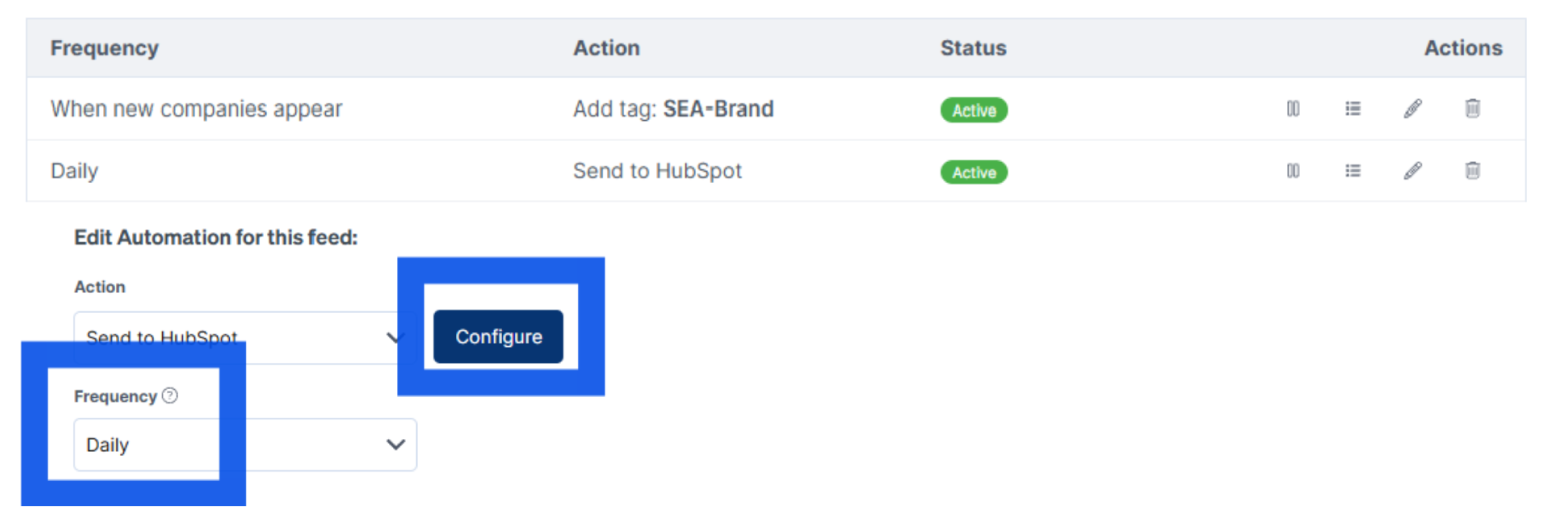
Tag examples:
Paid Media – SEA – Branded
Paid Media – LinkedIn Retargeting – C-Level
Affiliate – Tech Blog Partnership
Why it matters: Tags act as metadata markers—keeping your campaign traffic easy to find, filter, and act on. Whether it’s within Dealfront, your CRM, or analytics tools, tags help teams understand where a company came from, what sparked their interest, and how warm the lead may be.
Pro Tip: Maintain a shared “Tag Taxonomy” document to prevent duplication or tag sprawl. A standardized set of tags ensures consistency across campaigns and teams.
Step 4 – Sync to your CRM
Once you’ve captured paid campaign traffic in Dealfront and tagged it effectively, the next step is turning that data into action within your CRM. Markus demonstrates a detailed and effective setup in HubSpot that ensures all campaign data is visible, searchable, and reportable, making attribution crystal clear.
a. Connect and configure your CRM integration (HubSpot example)
Go to Dealfront → Settings → Integrations and connect your HubSpot account.
Then create custom fields in HubSpot to store campaign metadata:
Paid Media Tag
Campaign Category
Last Intent Date
Source Channel (optional)
Enable tag syncing so Dealfront-generated tags like “LinkedIn,” “SEA – Branded,” or “Affiliate Directory” flow into your CRM records automatically.
Note: These custom fields are not included by default in HubSpot, you’ll need to create and map them manually during setup.
Why it matters: Structured CRM data means sales can sort, filter, and act on campaign engagement instantly, without guesswork. It also creates a consistent foundation for reporting and attribution.
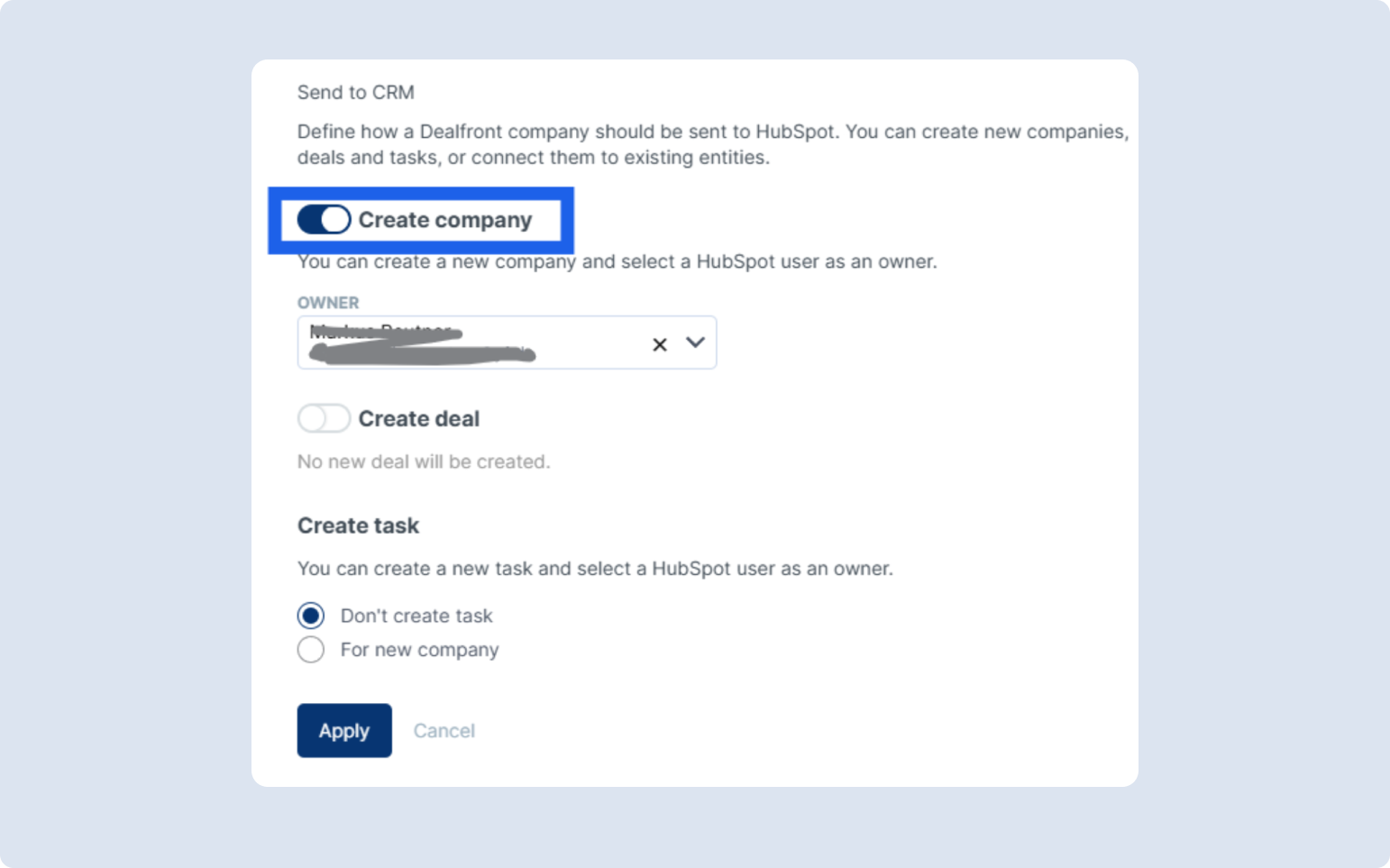
b. Automate lead handling with HubSpot workflows
Use HubSpot workflows to turn tagged visits into qualified sales actions:
Set a “Last Intent Date” - automatically update a custom property with the most recent date someone from that company visited via a paid campaign.
Assign ownership - route new companies to specific reps or round-robin queues based on campaign or ICP rules.
Trigger sales alerts - notify reps instantly via email or Slack when a key account shows paid intent so they can strike while interest is high.
These automations reduce lag and keep your paid funnel responsive and moving quickly.
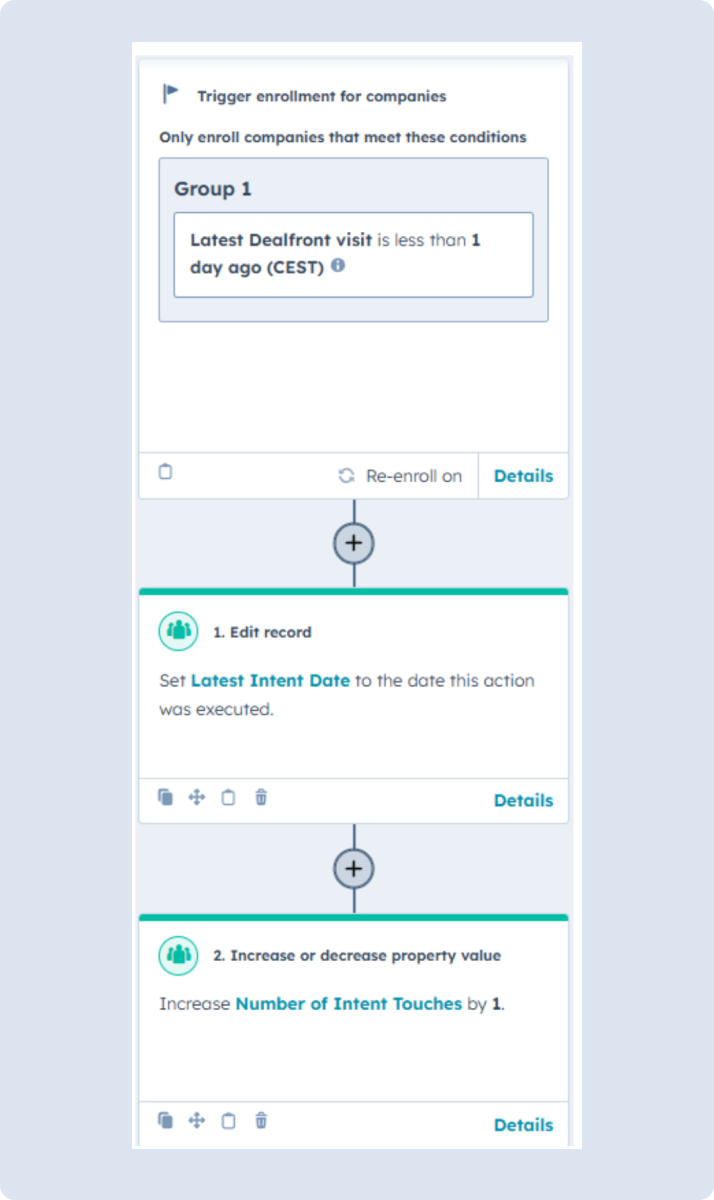
c. Give reps the ability to tag and segment accounts within the CRM:
Mark companies as Competitor, Customer, Disqualified, or Vendor
Sync those tags bi-directionally back into Dealfront
Align with segmentation fields such as ICP Fit, Lifecycle Stage, or Industry
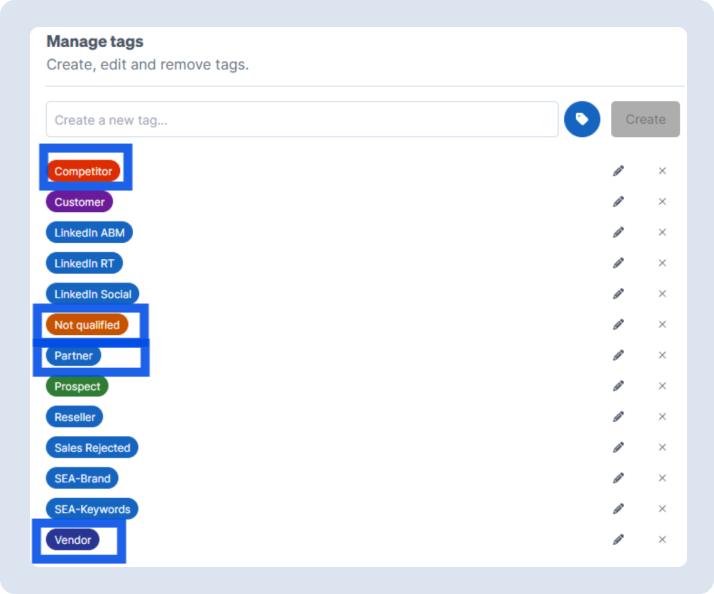
This creates a cleaner data loop between marketing and sales, enabling more accurate qualification, enrichment, and prioritization.
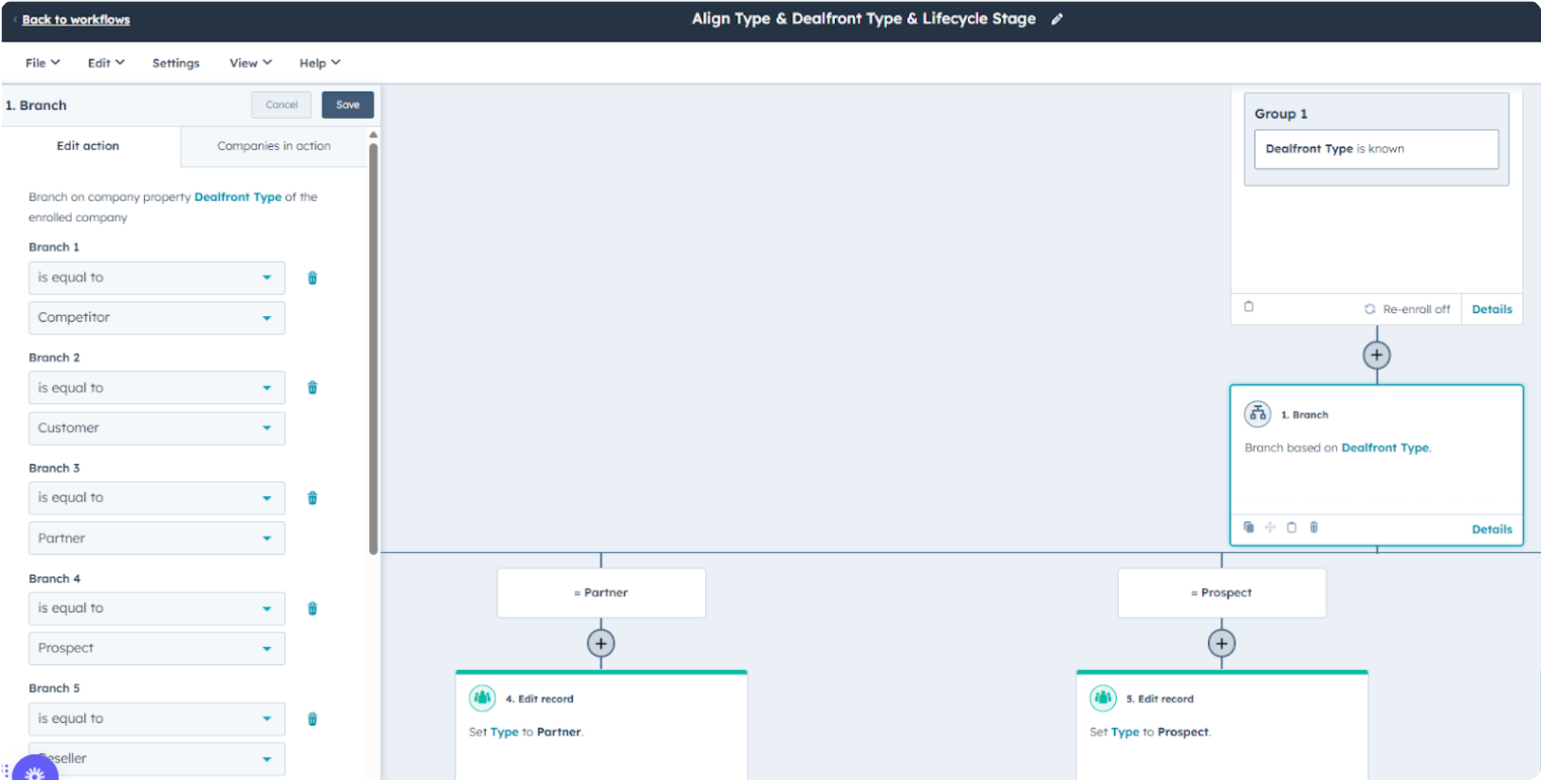
This tagging setup allows for:
Cleaner data enrichment
Rep-level qualification at scale
Better feedback loops between sales and marketing
d. Run meaningful attribution reports in HubSpot
With campaign data flowing through CRM fields, you can now build attribution models that go far beyond form fills.
Example reporting filters in HubSpot:
Lifecycle Stage = Opportunity
AND Tag contains = "SEA – Narrow Keywords"
AND Last Intent Date = Last 30 Days
Use this structure to report on:
Campaign performance by channel, keyword, or offer
Breakdown of campaign-influenced companies by lifecycle stage
Revenue impact by Deal stage and Source tag
First vs. last seen dates and intent recency
Why it matters: You’ll finally be able to connect your paid media investments to outcomes that matter, like pipeline velocity, deal stage influence, and actual closed revenue.
Step 5 – Track and report on paid media ROI
Once your feeds, tags, and CRM automations are in place, you can finally shift from activity metrics to outcome metrics. By integrating Dealfront with your CRM, you gain the ability to connect ad spend to real pipeline impact, tracking what really moves the needle.
What you can do:
Use your structured data to:
Attribute revenue and pipeline to specific campaigns, keywords, and landing pages
Break down performance by campaign tag, traffic source, and last intent date
Compare channels: branded vs. non-branded, Google Ads vs. LinkedIn, search vs. display
Identify which campaigns drive ICP-fit traffic that converts, versus those that just spend budget
Spot underperforming ads that generate visits but no engagement, and reallocate spend accordingly
Example metrics to track:
Companies tagged with Paid Media – SEA → Converted → Closed Won
Average time on site from paid traffic
High-intent actions (e.g. demo page visits, pricing page views) per campaign
Top campaigns by lifecycle stage: MQLs, SQLs, Opportunities, Customers
Tools to use:
Use a combination of platforms:
HubSpot Reports: Use custom properties like Dealfront Tags and Last Intent Date
CRM Dashboards: Segment pipeline and conversion metrics by campaign attributes
BI Tools (e.g. Looker Studio): Analyze funnel progression and keyword-level performance
Dealfront Exports: Track company-level engagement trends over time
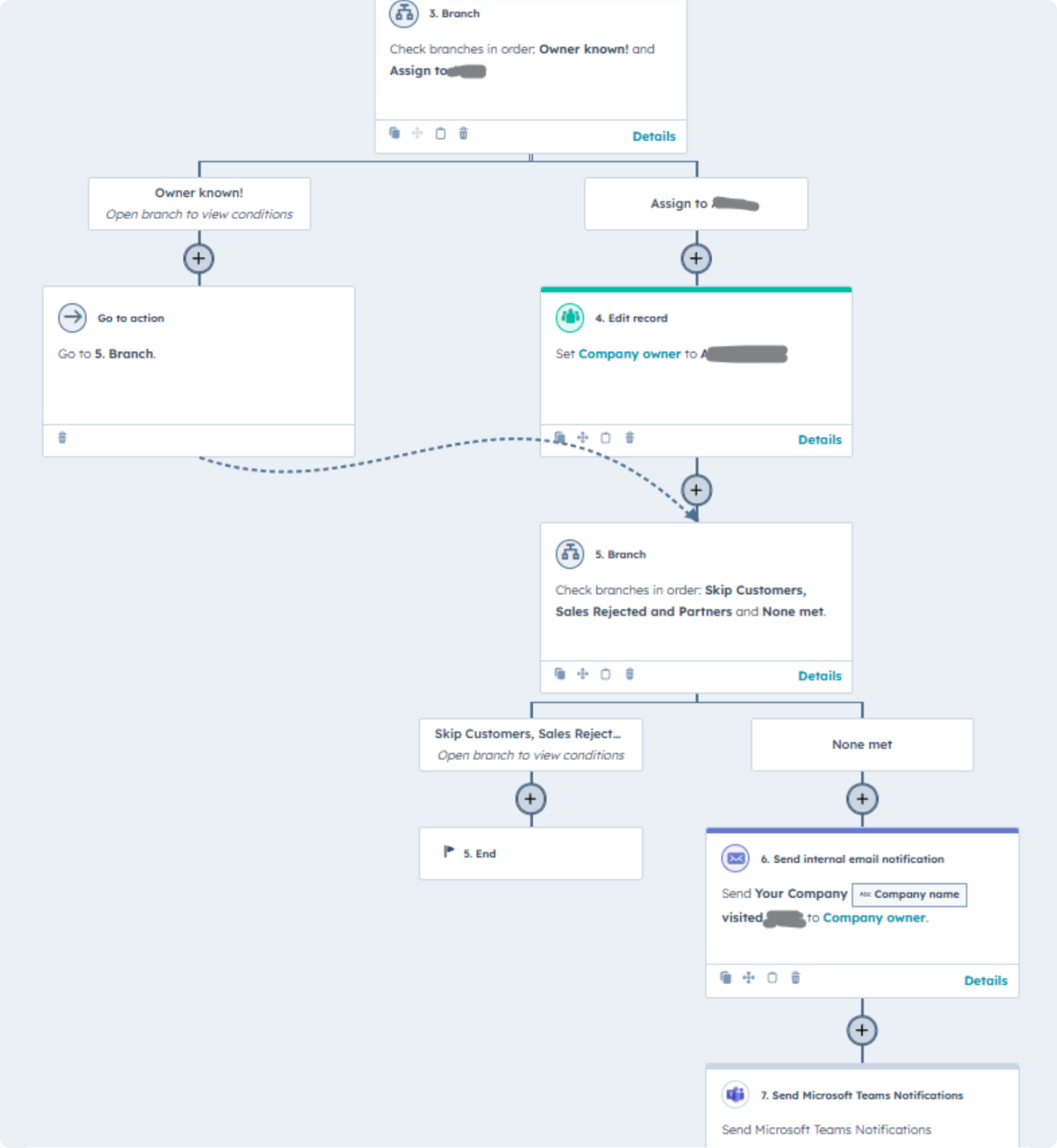
Pro tip:
Structure reports by:
Lifecycle stage + Campaign tag
Deal stage + Intent recency
Company size or Region + Campaign source
This gives marketing, RevOps, and sales clear visibility into which campaigns are generating ROI and where to double down or cut back.

Step 6 – Report on the impact of Branding Campaigns
Not every campaign is built to convert right away. Some exist to build awareness, generate future intent, and open the door for retargeting. These “brand” campaigns are harder to measure with traditional attribution, but Dealfront gives you the tools to track their long-term influence on pipeline.
Why it matters: Branding and top-of-funnel efforts often get undervalued in a last-click attribution model. But they play a critical role in starting the buyer journey, and shaping perception well before a form is filled or a demo is booked.
What to do:
- 1.
Tag branding campaigns properly: Use consistent UTMs like: utm_campaign=linkedin-brand-awareness or utm_campaign=programmatic-display. Create matching tags and feeds in Dealfront.
- 2.
Monitor branded traffic over time: Use tags like repeat visits, pricing page views and gated content downloads to segment and observe company behavior.
- 3.
Build a multi-touch attribution report: In your CRM, track how companies from branding campaigns progress over time, including using website visitor data to fuel IP-targeted retargeting strategies:
- 4.
Apply attribution weighting: Use a weighted model to reflect real influence. For example: First Touch = 30%, BoFu Page View = 50%, Direct Conversion = 20%
This model helps marketing show how branding impacts pipeline, even when it's not the final click.
Pro Tip: This works best when all campaign types (branding, performance, organic, referral) are tracked and tagged using the same taxonomy. The more consistent your attribution structure, the clearer your ROI picture becomes.
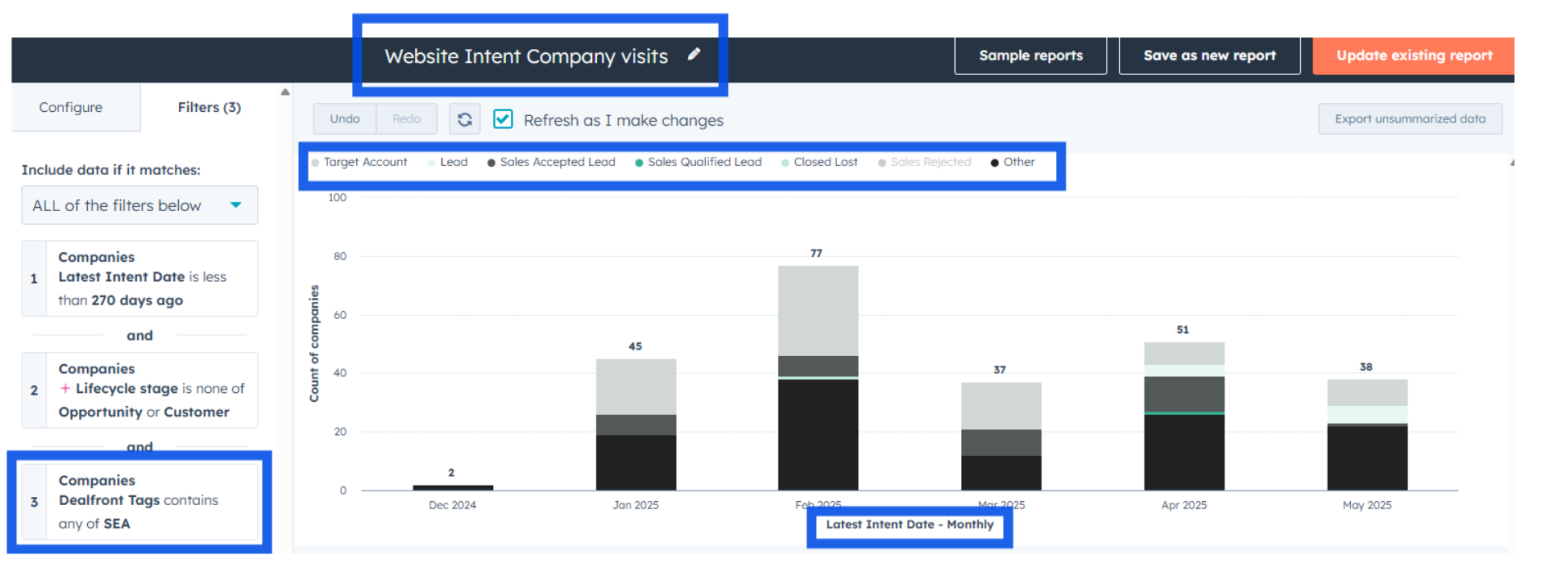
What’s Next
You’ve now set up a solid foundation for tracking paid media performance with Dealfront. The next step? Use that insight to optimize, align, and activate your go-to-market motion.
Here’s how to take things further:
1. Run a quarterly attribution review
Go beyond surface-level reporting by regularly reviewing what’s driving real outcomes. Focus on:
Ad-engaged company visits vs. pipeline created
Revenue influenced by branded vs. non-branded campaigns
Engagement trends by audience segment, keyword, and source
Use these insights to double down on what works and cut what doesn’t. Over time, this creates a more efficient and higher-converting paid media strategy.
2. Refine your targeting based on data
Now that you know which campaigns attract ICP-fit accounts:
Update your ad platform targeting criteria (e.g. job titles, firmographics, geos) Build lookalike audiences based on converted, high-engagement visitors
Share campaign-level insights with your media agency or in-house paid team to fine-tune execution
This moves your ad strategy from guesswork to precision.
3. Sync signals into your ABM strategy
Treat campaign data as fuel for broader account-based efforts. You can:
Create retargeting audiences for ABM ads based on campaign visits
Trigger personalized outreach sequences when key accounts engage with specific paid campaigns
Add companies with strong engagement into outbound cadences with tailored messaging
Paid media signals are often the first sign of intent, so bring them into your ABM playbook.
4. Train Sales to act on paid signals
Sales needs visibility into what marketing is driving and how to respond. Run a short enablement session to show reps:
Where to find Dealfront campaign data in the CRM
How to read campaign tags, last intent dates, and other key properties
Email templates and talk tracks they can use to follow up with ad-engaged prospects
When sales understands the “why” behind each touchpoint, they can follow up faster, with more relevance, and close more deals.
Email templates for Sales follow-up
Template 1: First touch from a paid campaign
Template 1: First touch from a paid campaign
Use case: When an ICP-fit company visits your site via a paid ad for the first time.
Subject: Great to see [Company Name] exploring [Your Solution]
Hi [First Name],
I noticed that someone from [Company Name] recently engaged with our [campaign/ad topic] via [Google Ads/LinkedIn] and spent time on our [page visited—e.g., pricing or product] page.
If you're exploring solutions in this space, I’d be happy to share how we’ve helped others in [their industry] solve [relevant pain point]. Would you be open to a quick call next week?
Best regards, [Your Name] [Your Title] [Your Company] [Email Signature]
Template 2: Retargeting/multi-touch campaign follow-up
Template 2: Retargeting/multi-touch campaign follow-up
Use case: When someone from a company has engaged with multiple ads or returned via retargeting.
Subject: Ready when you are
Hey [First Name],
It looks like [Company Name] has been checking out a few of our resources lately, including [Page 1] and [Page 2].
If you're evaluating options in [product category], I’d love to show you how [Your Company] compares—or just answer any open questions.
I can send over a quick product overview or case study, if that’s helpful.
Let me know what works best for you!
Cheers, [Your Name] [Your Title] [Email Signature]
Template 3: Post-demo page or high-Intent visit
Template 3: Post-demo page or high-Intent visit
Use case: When someone from a paid campaign views pricing, demo, or case study pages—strong signals of buying intent.
Subject: Thought this might help your decision process
Hi [First Name],
I noticed your team at [Company Name] explored our [Pricing/Demo/Case Study] page recently after engaging with one of our [LinkedIn/Google] campaigns.
We often see that companies who check out these pages are looking to compare vendors or build an internal case.
Here’s a [resource: ROI calculator, comparison sheet, or testimonial] that might make things easier.
Let me know if I can help answer any questions or tailor a walkthrough for your team.
Thanks, [Your Name]
Turn insights into action
Ready to grow your pipeline?
GDPR Compliant
Built & Hosted in EU
Deep B2B Data
